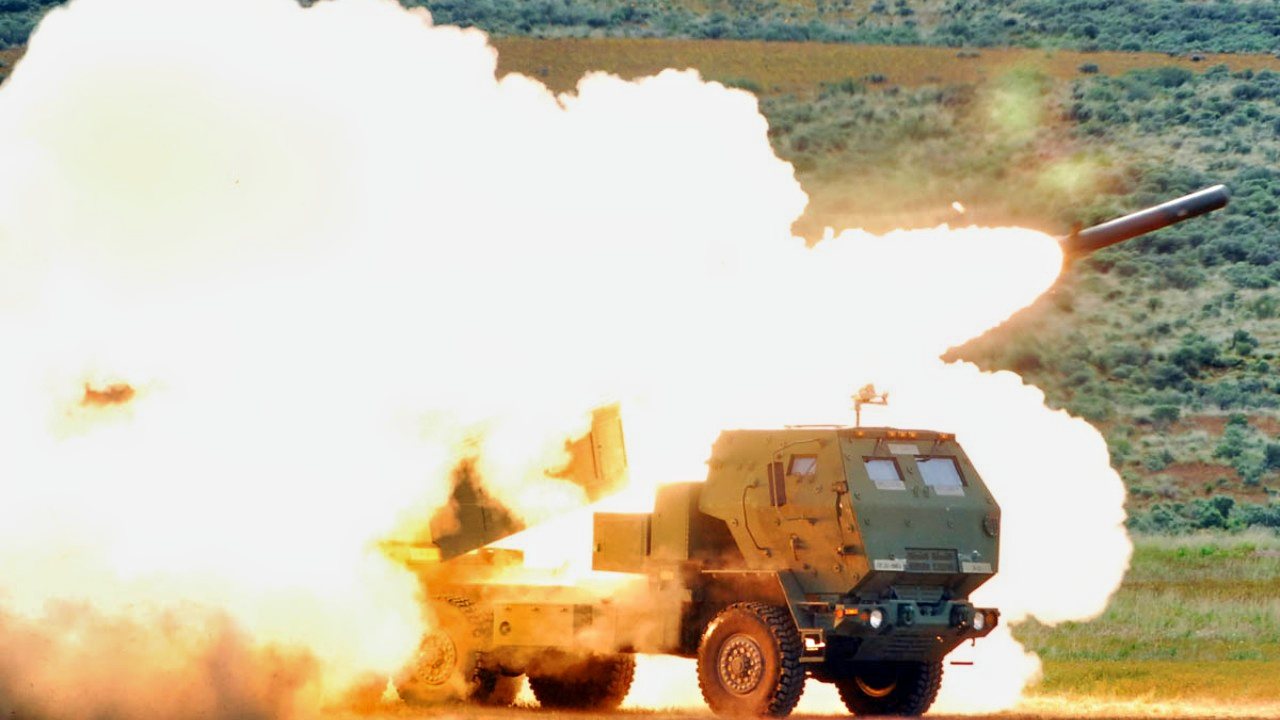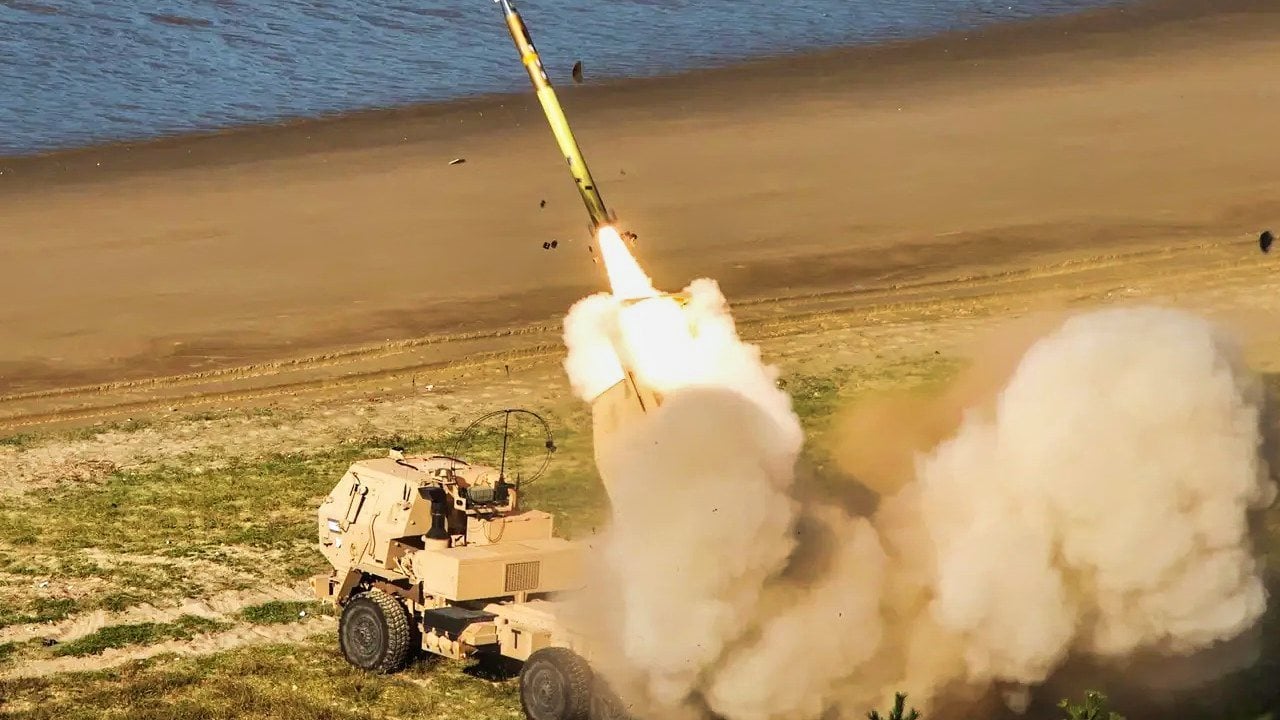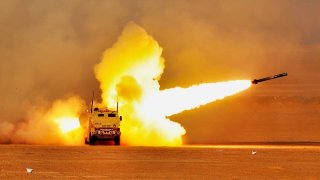Ukraine Must Be Able to Use Long-Range Weapons to Strike Russia
Fears of escalation are overblown. Kyiv needs unrestricted use of its weaponry to fight back against Russian aggression.
Yesterday, Russia struck Ukrainian civilians again. Two ballistic missiles hit a military academy and a nearby hospital in Poltava, injuring over 271 people and killing fifty-one. In his urgent address, President Zelensky reiterated that air defense systems and long-range missiles should not gather dust when they are desperately needed in Ukraine. He added, “Long-range strikes that can defend against Russian terror are needed now, not sometime later.”
Ukraine has long wished to gain U.S. permission to “uncuff” and push back against Russian aerial and missile assaults. Defense Minister Rustem Umerov and Andriy Yermak, Head of the Office of the President of Ukraine, have just returned from Washington, DC, where they presented a list of long-range targets in Russia to top U.S. national security officials. They hope to demonstrate which targets Kyiv’s military could strike if Washington lifts its restrictions on U.S. weapons. Just before the arrival, the Institute for the Study of War (ISW) presented an interactive map of known military and paramilitary targets in Russia which are in the range of Ukrainian ATACMS.

This discussion is one of many rounds of talks currently trapped by Western fears of escalation, which only leads to further Russian escalation. The Pentagon, through spokesperson Major General Pat Ryder, expressed concerns about the potential for unintended consequences or escalation that could turn the conflict into a broader one beyond Ukraine.
Meanwhile, Russia continues its killing of Ukrainian civilians. It threatens nuclear security at the Zaporizhzhia power plant and committed ecocidal acts, such as damaging the Kakhovka Dam. This year, Russia attacked a children’s cancer hospital on July 8 and launched one of its largest series of drone and missile strikes to date on August 26, targeting Kyiv’s dam and essential power grids. These are just a few of the litany of Russian crimes committed as part of a meticulous strategy to eliminate the Ukrainian nation and statehood.
Not all of Ukraine’s allies are apprehensive, though. As of today, over ten NATO countries have declared their support for Ukrainian strikes on Russian territory, including nuclear powers such as the UK and France. NATO Secretary General Jens Stoltenberg and EU foreign affairs chief Josep Borrell have both advocated Ukraine's right to strike inside Russia in self-defense, thus leading a “growing EU chorus” urging the removal of all restrictions.
The pressure is growing from within the United States, as well. In May 2024, House Intelligence Committee members Rep. Mike Turner (R-OH), Rep. Jim Himes (D-CT), and Rep. Gerry Connolly (D-VA), along with their colleagues, sent a bipartisan letter to Defense Secretary Lloyd Austin emphasizing that “the Biden Administration’s current policy is handcuffing Ukraine’s ability to push back on Russian forces near Kharkiv with U.S.-origin weapons.”
“We are able and capable to win,” said Rustem Umerov in a July interview with Fox News. “We have a plan, and we are voicing out that we need more weapons. And hesitation to provide us weapons, hesitation to provide us permissions and lifting bans, this takes time. Time is very crucial, but we are able and capable of doing it.”
So, what should the current U.S. administration do?
First of all, it needs to accept basic facts: using Western weapons against targets in Russia would not make NATO a party to the conflict. Such action is justified under international law, as Moscow’s attacks on Ukraine originate from Russian territory. The current situation is asymmetric, and before addressing escalation, we must first aim to level the playing field.
Second, most of Russia’s ruthless attacks are not responses to Ukrainian or Western actions. They are simply statements of intent. Russia has launched approximately 10,000 missiles of various types and more than 33,000 guided bombs at Ukraine since 2022.
At the same time, despite escalation rhetoric, Russia got stuck in a prolonged war with limited successes at too-high costs, while Ukraine had all this time been responding having its hands half-tied or half-empty. Thus, the West should reconsider its contradictory beliefs: that Russia is weak and may collapse or that it is strong enough to challenge NATO—neither is essentially true.
Third, the range of legitimate wartime targets should include military and paramilitary objects, such as airfields, weapon-production factories, repair and technical bases, deep communication lines, and command centers. It should also cover supply and oil depots, as well as infrastructural targets like the Kursk or Crimea bridges, some of which are partially located in Ukraine’s sovereign territory.
It should be noted that targeting specific infrastructural objects aims to disrupt logistics supporting the Russian army, particularly in occupied Ukrainian territories. Ukraine does not intend to create a humanitarian crisis by targeting medical and civilian facilities, unlike Russian forces, which often use air-defense systems like the S-400 to attack Ukrainian civilians. Moreover, it is more militarily and economically effective to destroy a launcher or bomb carrier than to intercept missiles already launched or repair the damage they cause.

Of course, limitations have spurred Ukraine to accelerate the development of its own long-range weapons, like the newly-presented missile-drone “Palyanytsia,” designed to destroy the enemy’s offensive potential. In addition, the prospects of modifications to the Neptune missile or the “Grom-2” (which has a potential range of up to 700 kilometers) are promising. However, deploying sufficient production requires the most precious resource Ukraine lacks—time.
Fourth, the Russian leadership is colorblind. Kyiv has crossed Moscow’s “red lines” numerous times—from the sinking of the Russian flagship Moskva and the 2022 explosion of the Crimean Bridge to drone attacks on the Kremlin and strikes on Russia’s strategic airbases. Russia’s reactions have been pointedly lethargic. Moreover, the Western provision of HIMARS, tanks, ATACMS, and F-16 fighters were once deemed intolerable escalations. Now, Ukraine makes use of these weapons systems regularly.
Earlier this year, the United States already allowed Ukraine to strike Russian border regions with American weapons, ending the period when Ukraine had been compelled to fight like partisans. Still, this permission has not yet been extended to long-range ATACMS missiles.
Last but not least, only when Russian leadership sees that Ukraine can provide a decisive response will it reconsider its revanchist plans. Any appeals to mercantilism or humanism are likely to fail. As the Russian poet Tutchev put it, “You will not grasp her [Russia] with your mind.” Meanwhile, long-range missiles will create a buffer zone extending beyond Ukraine's borders, giving it more time to activate air defenses during strikes. Currently, in border regions, targets are often hit by Russia before air alerts activate.
If the West manages to overcome its fears once more, it should also consider the recent open letter signed by Ukrainian and Western intellectuals and civil society leaders prompted by the July 8 attack on Ukraine. The letter emphasizes the urgent need for Ukrainian air superiority—a task long delayed—advocates for intercepting Russian missiles with systems based in NATO countries neighboring Ukraine, despite cold reception of the idea from key NATO members, and calls for sustainable military support from Western democracies at 0.25 percent of their GDP, ensuring Ukraine remains a stronghold for itself and other democratic states.
About the Author:
Elena Davlikanova is a Democracy Fellow with the Center for European Policy Analysis.
Images: Creative Commons/U.S. Military.


